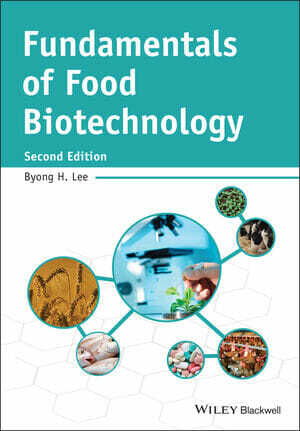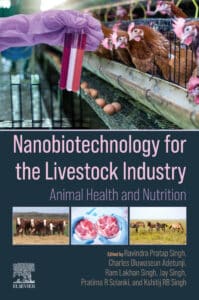Preface xi
What Is Biotechnology? xiii
What Is Food Biotechnology? xvii
Part I New Trends and Tools of Food Biotechnology 1
1 Fundamentals and New Aspects 3
1.1 Biotechnological applications of animals, plants, and microbes 3
1.2 Cellular organization and membrane structure 6
1.3 Bacterial growth and fermentation tools 11
1.3.1 Classification and reproduction of biotechnologically important bacterial system 11
1.3.2 Bacterial growth 12
1.3.3 Environmental factors affecting bacterial growth 16
1.4 Fungal growth and fermentation tools 19
1.5 Classical strain improvement and tools 22
1.5.1 Natural selection and mutation 22
1.5.2 Recombination 27
Summary 30
1.6 Systems/synthetic biology and metabolic engineering 31
Summary 36
1.7 Bioengineering and scale-up process 36
1.7.1 Microbial and process engineering factors affecting performance and economics 38
1.7.2 Fermentor and bioreactor systems 39
1.7.3 Mass transfer concept 50
1.7.4 Heat transfer concept 53
1.7.5 Mass and heat transfer practice 57
1.7.6 Scale-up and scale-down of fermentations 71
1.7.7 Scale-up challenges 81
Summary 84
1.8 Molecular thermodynamics for biotechnology 85
1.8.1 Protein folding and stability 85
Summary 92
1.8.2 Downstream processes on crystallization and chromatography 93
Summary 96
1.9 Protein and enzyme engineering 96
Summary 100
1.10 Genomics, proteomics, and bioinformatics 100
Summary 108
1.11 Biosensors and nanobiotechnology 109
1.11.1 Biosensor 109
1.11.2 Nanobiotechnology and nanobiosensor 113
Summary 116
1.12 Quorum sensing and quenching 116
Summary 120
1.13 Micro- and nano-encapsulations 120
1.13.1 Microencapsulation 122
1.13.2 Nanoencapsulation 129
Summary 138
Bibliography 140
2 Concepts and Tools for Recombinant DNA Technology 147
2.1 Concepts of macromolecules: function and synthesis 147
2.1.1 DNA replication 147
2.1.2 Roles of RNA 150
2.1.3 Detailed aspects of protein synthesis 153
2.2 Concepts of recombinant DNA technology 161
2.2.1 Restriction endonucleases 162
2.2.2 Plasmid vectors 164
2.2.3 Purpose of gene cloning 168
2.3 DNA sequencing 180
2.4 Polymerase chain reaction (PCR) 180
2.5 Manipulation techniques of DNA 183
2.5.1 Isolation and purification of nucleic acids 183
2.5.2 Agarose gel electrophoresis 184
2.5.3 Blotting and hybridization 185
2.6 Gene cloning and production of recombinant proteins 186
2.6.1 Cloning and expression of bacterial β-galactosidase in E. coli 186
2.6.2 Cloning, expression, and production of bovine chymosin (rennet) in yeast K. lactis 188
Summary 190
Bibliography 191
Part I Questions and Answers 193
Part II Applications of Biotechnology to Food Products 205
3 Yeast-Based Processes and Products 207
3.1 Food yeasts and derivatives 207
3.1.1 Introduction 207
3.1.2 Industrial processes 207
Summary 212
3.2 Alcoholic beverages 212
3.2.1 Introduction 212
3.2.2 Production and sales of major alcoholic beverages 212
3.2.3 Production processes 213
Summary 225
3.3 Industrial alcohols 225
3.3.1 Introduction 225
3.3.2 Raw materials and microorganisms 226
3.3.3 Production processes 230
3.3.4 Economics 231
Summary 232
3.4 Bread and related products 232
3.4.1 Introduction 232
3.4.2 Ingredients and formulations 233
3.4.3 Production processes 234
3.4.4 New developments 236
Summary 237
Bibliography 237
4 Bacteria-Based Processes and Products 241
4.1 Dairy products 241
4.1.1 Introduction 241
4.1.2 Basic knowledge of manufacture of dairy products 244
4.1.3 Metabolic systems in lactic acid bacteria 249
4.1.4 Genetic modification of lactic acid bacteria 252
4.1.5 Applications of genetic engineering 254
Summary 262
4.2 Meat and fish products 262
4.2.1 Introduction 262
4.2.2 Fermented meat products 263
4.2.3 New developments 267
4.2.4 Fermented fish products 267
Summary 270
4.3 Vegetable products 270
4.3.1 Introduction 270
4.3.2 Fermented vegetable products 271
4.3.3 Fermented soy products 275
4.3.4 New developments 280
Summary 280
4.4 Vinegar and other organic acids 281
4.4.1 Introduction 281
4.4.2 Acetic acid 281
4.4.3 Citric acid 283
4.4.4 Lactic acid 284
4.4.5 Malic acid 285
4.4.6 Fumaric acid 286
Summary 286
4.5 Bacterial biomass 287
4.5.1 Introduction 287
4.5.2 Microorganisms for the production of biomass 288
4.5.3 Raw materials for the production of biomass 289
4.5.4 Production process 292
4.5.5 Nutritional aspects 293
4.5.6 Economics and new developments 294
Summary 295
4.6 Polysaccharides 296
4.6.1 Introduction 296
4.6.2 Microbial polysaccharides 297
4.6.3 Fermentation process 298
4.6.4 Bacterial polysaccharides 299
4.6.5 Other polysaccharides 304
Summary 304
Bibliography 306
5 Other Organism-Based Processes and Products 313
5.1 Enzymes 313
5.1.1 Introduction 313
5.1.2 Production of enzymes 315
5.1.3 Applications 317
5.1.4 New developments and protein engineering 326
5.1.5 Economics 328
Summary 328
5.2 Sweeteners 329
5.2.1 Introduction 329
5.2.2 Nutritive sweeteners 329
5.2.3 High-intensity sweeteners 333
5.2.4 Low calorie sweeteners 337
5.2.5 New developments 338
Summary 339
5.3 Flavors and amino acids 339
5.3.1 Introduction 339
5.3.2 Microbial flavors 340
5.3.3 Enzymatic flavor generation 347
5.3.4 Amino acids 348
5.3.5 Economics 350
Summary 351
5.4 Vitamins and pigments 352
5.4.1 Introduction 352
5.4.2 Production of vitamins 352
5.4.3 Production of pigments 356
5.4.4 Economics 359
Summary 359
5.5 Mushrooms 360
5.5.1 Introduction 360
5.5.2 Cultivation 361
5.5.3 Culture preservation 363
Summary 363
5.6 Cocoa, tea, and coffee fermentation 364
5.6.1 Introduction 364
5.6.2 Cocoa fermentation 364
5.6.3 Coffee fermentation 367
5.6.4 Tea fermentation 369
Summary 372
5.7 Bacteriocins 372
5.7.1 Introduction 372
5.7.2 Classification 373
5.7.3 Mode of action 375
5.7.4 Bioengineering of bacteriocins 376
5.7.5 Applications of bacteriocins 379
5.7.6 Commercial production of bacteriocins 382
Summary 383
5.8 Functional foods and nutraceuticals 383
5.8.1 Probiotics and prebiotics 384
5.8.2 Health claim regulation 396
Summary 397
Bibliography 397
Part II Questions and Answers 411
Part III Other Potential Applications of the New Technology 431
6 Plant Biotechnology, Animal Biotechnology, and Safety Assessment 433
6.1 Plant biotechnology 433
6.1.1 Introduction 433
6.1.2 Plant cell and tissue cultivation 435
6.1.3 Plant breeding 437
6.1.4 Application of plant cell and tissue culture 441
Summary 448
6.2 Animal biotechnology 449
6.2.1 Introduction 449
6.2.2 Transgenic animals 449
6.2.3 Animal cell culture 453
Summary 463
6.3 Food safety issues of new biotechnologies 464
6.3.1 Introduction 464
6.3.2 Safety evaluation of novel food products 465
6.3.3 Genetically modified microorganisms and their products 467
6.3.4 Genetically modified plants and their products 469
6.3.5 Genetically modified animals and their products 473
6.3.6 Detection methods of GM crops 475
6.3.7 Detection methods of transgenic animals and fish 480
6.3.8 Containment: physical and biological 481
6.3.9 Promises and limitations 481
Summary 482
Bibliography 483
Part III Questions and Answers 491
Index 497














![Ettinger’s Textbook of Veterinary Internal Medicine 9th Edition [PDF+Videos] Ettinger’s Textbook of Veterinary Internal Medicine 9th Edition [True PDF+Videos]](https://www.vet-ebooks.com/wp-content/uploads/2024/10/ettingers-textbook-of-veterinary-internal-medicine-9th-edition-100x70.jpg)

![Textbook of Veterinary Diagnostic Radiology 8th Edition [PDF+Videos+Quizzes] Thrall’s Textbook of Veterinary Diagnostic Radiology, 8th edition PDF](https://www.vet-ebooks.com/wp-content/uploads/2019/09/textbook-of-veterinary-diagnostic-radiology-8th-edition-100x70.jpg)






